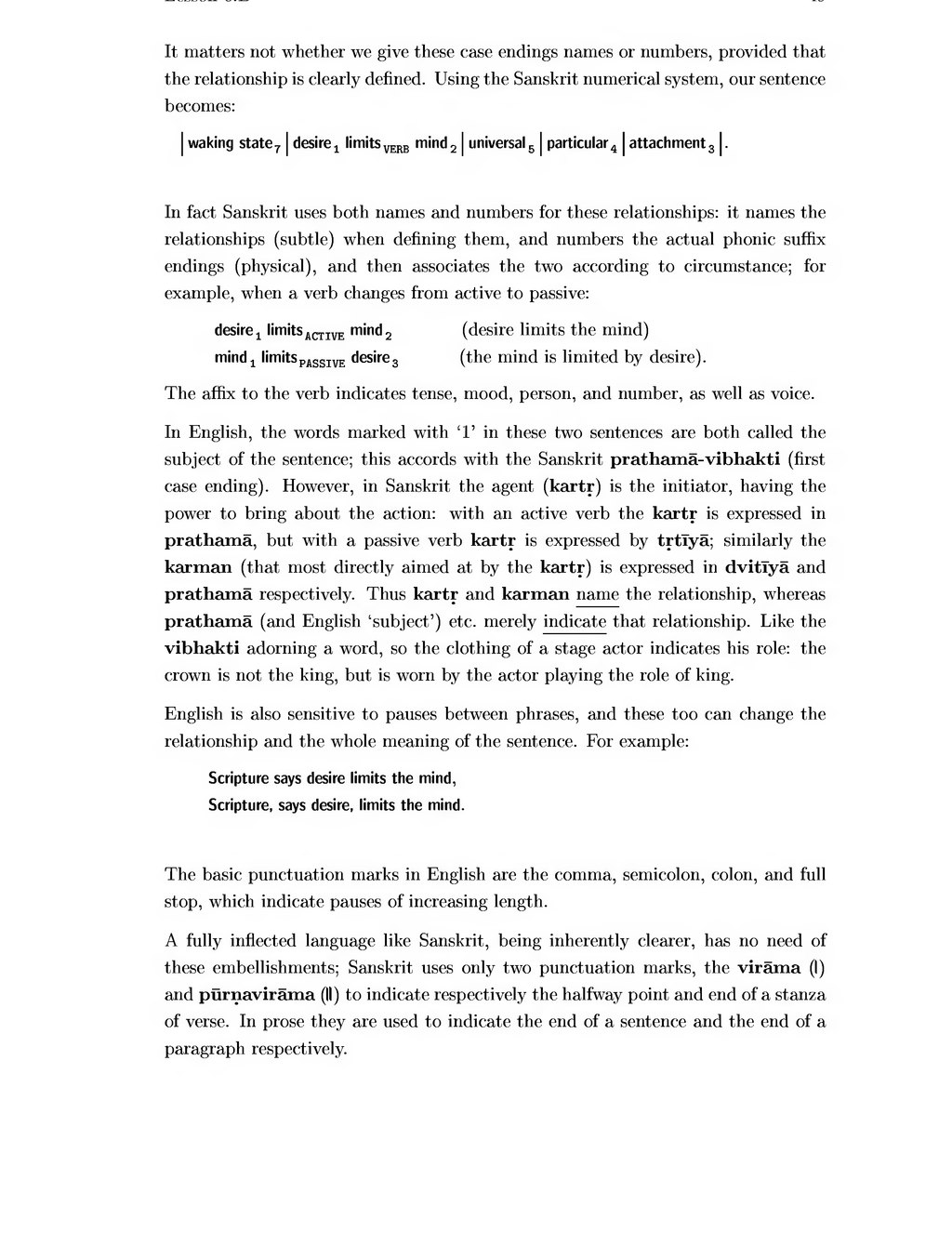It matters not whether we give these case endings names or numbers, provided that the relationship is clearly defined. Using the Sanskrit numerical system, our sentence becomes: I waking state 7 I desire 1 limits VERB mind 2 I universal 5 I particular 4 I attachment 3 I. In fact Sanskrit uses both names and numbers for these relationships: it names the relationships (subtle) when defining them, and numbers the actual phonic suffix endings (physical), and then associates the two according to circumstance; for example, when a verb changes from active to passive: desire t limits ACTIVE mind 2 (desire limits the mind) mind! limits PASSIVE desire 3 (the mind is limited by desire). The affix to the verb indicates tense, mood, person, and number, as well as voice. In English, the words marked with T in these two sentences are both called the subject of the sentence; this accords with the Sanskrit prathama-vibhakti (first case ending). However, in Sanskrit the agent (kartr) is the initiator, having the power to bring about the action: with an active verb the kartr is expressed in prathama, but with a passive verb kartr is expressed by trtlya; similarly the karman (that most directly aimed at by the kartr) is expressed in dvitlya and prathama respectively. Thus kartr and karman name the relationship, whereas prathama (and English 'subject') etc. merely indicate that relationship. Like the vibhakti adorning a word, so the clothing of a stage actor indicates his role: the crown is not the king, but is worn by the actor playing the role of king. English is also sensitive to pauses between phrases, and these too can change the relationship and the whole meaning of the sentence. For example: Scripture says desire limits the mind, Scripture, says desire, limits the mind. The basic punctuation marks in English are the comma, semicolon, colon, and full stop, which indicate pauses of increasing length. A fully inflected language like Sanskrit, being inherently clearer, has no need of these embellishments; Sanskrit uses only two punctuation marks, the virama (I) and purnavirama (II) to indicate respectively the halfway point and end of a stanza of verse. In prose they are used to indicate the end of a sentence and the end of a paragraph respectively.
पृष्ठम्:Sanskrit Introductory.djvu/५९
एतत् पृष्ठम् अपरिष्कृतम् अस्ति
